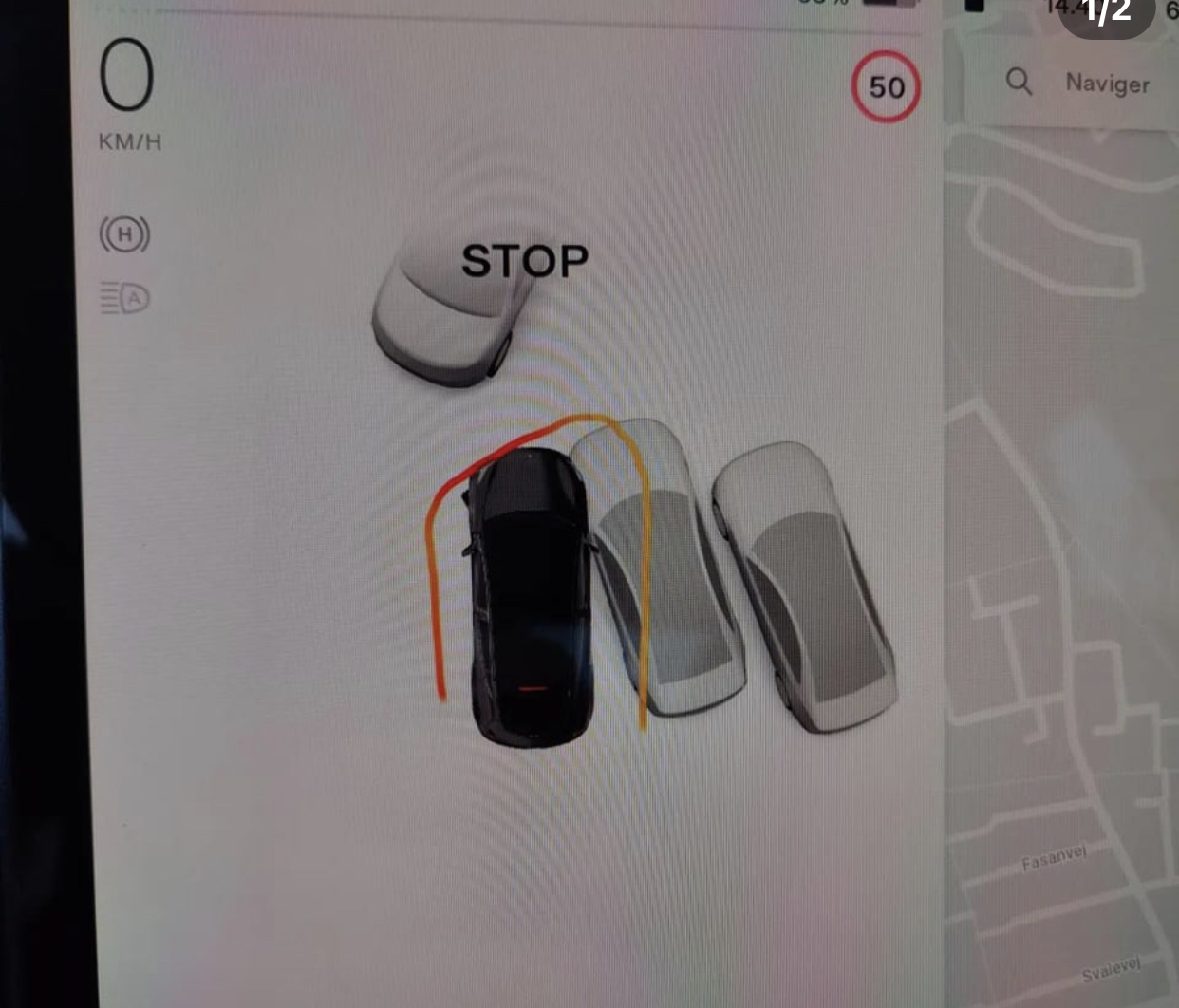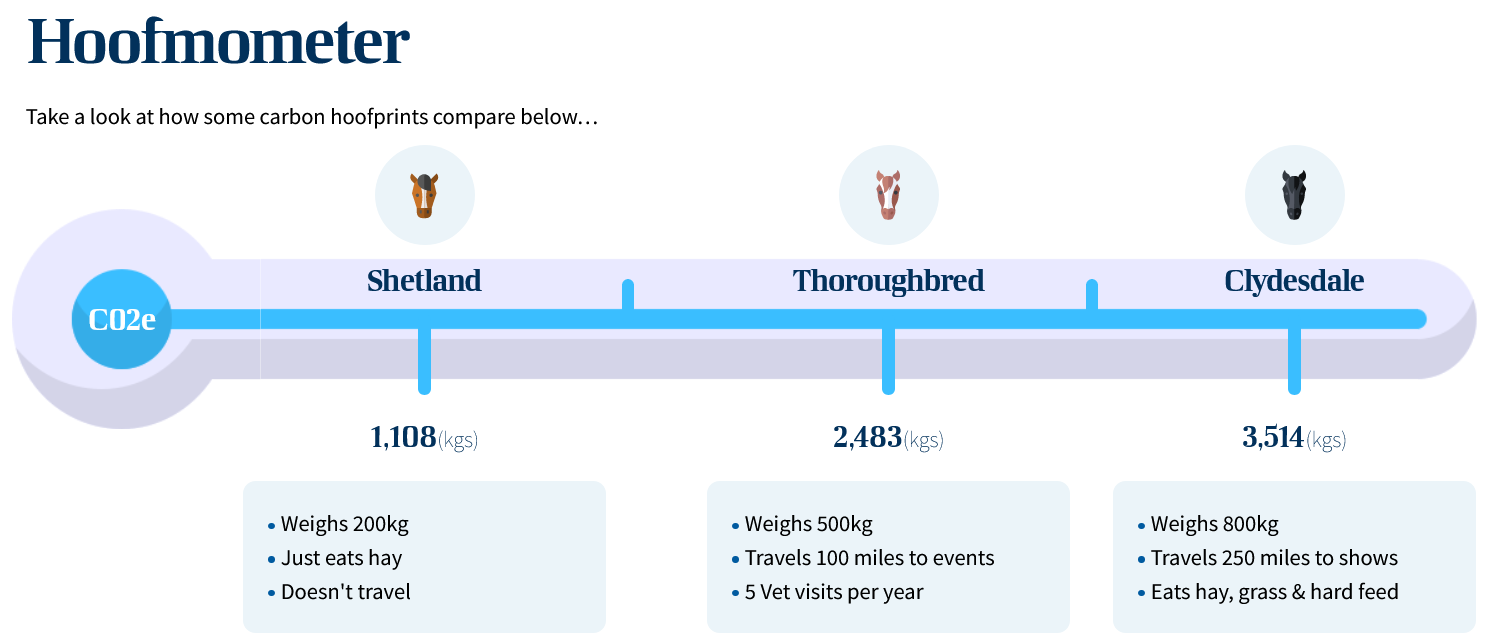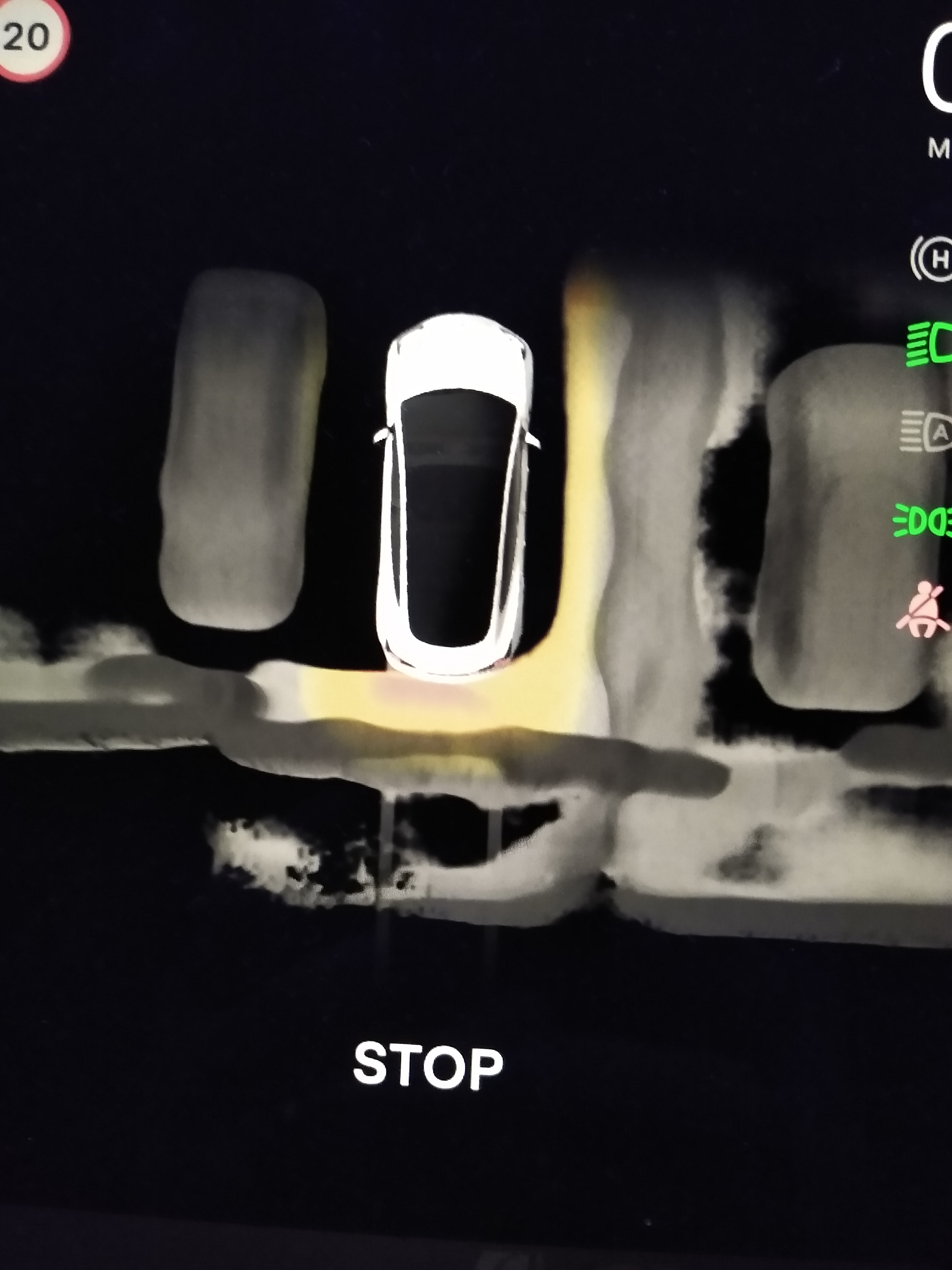We’d like to remind Forumites to please avoid political debate on the Forum.
This is to keep it a safe and useful space for MoneySaving discussions. Threads that are – or become – political in nature may be removed in line with the Forum’s rules. Thank you for your understanding.
EV Discussion thread
Comments
-
It is a very ‘Marmite’ update. Personally I prefer it to the old version. The old version was not accurate in my experience and often showed jumping/glitching graphics. When reversed up close to my house for charging it used to show it as a large truck embedded in the back of the car! The new 3D rendering now shows clearly where the wall is with the correct gap in between and even shows where 2 plant pots are in front of the house.Grumpy_chap said:
I am on software update 2023.44.30.8.noitsnotme said:
What software version are you on? This is the Parking Assist “upgrade” that was part of the holiday software update in December to version 2023.44.30.4. It was in the release notes.
The old parking assist images with the squiggly lines as below are gone.
I just checked the release notes and they do say that included "Park Assist Upgrade" so that it will display a "high fidelity 3D representation".
I am not opposed to an enhanced visual display, but the previous display which you have shared a graphic of was perfectly crystal clear, accurate and simple. If the display graphic is to be "enhanced" I don't want that to be at the expense of usability.
In the picture I posted upthread, the rear of the car is shown as crashed into the brick wall behind the car where it is actually 2'-6" away. The brick wall displays as simply a series of uneven blobs; you would expect a brisk wall to be a very easy thing to detect and display correctly as it is a clear and defined regular structure.
The flower bed to the side is 3' away. Oddly, the edge of the flowerbed has a fairly defined straight line yet is a softer and harder to interpret profile, while the fence and path beyond are shown as blurry blobs (though less important as they are not near the car).
When I drive onto the driveway, the brick pillar which I rally am keen to avoid does not even show in the distance measurement indications.
I am intrigued by the car also being shown as having two scorching hot streak lines behind the rear - almost like a DeLorean might be expected to show. Now, that would be a good software update
I have also had a lot of caution / warning messages display stating that the distance measurement is inaccurate. All of these changes, the messages and the blurry graphics seem to have happened together and at the same time as a bout of wet weather. I had put the two down to dirty lenses, but cleaning the lenses yesterday made no improvement.
It does seem as though "improved" graphics has not improved the graphics and degraded the functionality.
We are back to Tesla having got the "electric" part of the electric car to a great place but the "car" part being woeful.
As with all of this stuff I use them as parking aids, not in isolation. Mirrors, cameras and the good old Mark 1 eyeball all get utilised. I wouldn’t trust the 3D visualisation alone but I do find it more useful than the previous version.0 -
As of course the electricity just arrives at our plugs by magic - no need to build a transmission grid, wind turbines, solar farms, generating plant, transport gas or coal around the world or build nuclear power stations.
As of course the petrol/diesel just arrives at our pumps by magic - no need to drill oil wells, build drilling rigs, pipelines, tankers, refineries...
In fairness to petrol, it's amazing that it has lasted so long, despite being such a poor and inefficient idea/process. Just goes to show what happens when externalities aren't considered.Imagine if somebody presented a device today, after a century of electric power, with hundreds of reciprocating and other moving parts, that was 25% fuel efficient, produced toxic fumes and made a lot of noise.
The Smash aliens would die laughing.
2 -
Yes we should have stuck with horses. No externalities with 40 million horses peeing and pooing on UK streets every day.Martyn1981 said:EricMears said:
IMO, 75% 'efficiency' is a lot better than 40%.JKenH said:
Not wishing to start an ICE vs debate but, perhaps, in pointing out the inefficiency of an ICE vehicle we should also acknowledge that typically only around 75% of the energy an EV draws from the plug is used to propel it, the rest might be considered “wasted”.Netexporter said:possibly there would not be the same level of impact from an ICE because the ICE simply uses heat energy that is wasted at all other times regardlessICE vehicles waste over 60% of their fuel all the time the engine is running.
And of course for most of us the cost/unit energy of electrical fuel is a lot less than for liquid fuel.
In fairness to petrol, it's amazing that it has lasted so long, despite being such a poor and inefficient idea/process. Just goes to show what happens when externalities aren't considered.This is really what the world would have been like if the likes of Greta Thunberg had been in power in 1900 - if we hadn’t had fossil fuels. Or actually it wouldn’t as our cities would be so riddled with disease that all our resources would be deployed treating the sick, the wealthy would have moved out to their country houses and the poor left in conditions of squalor. There probably would have been a revolution and at best we would be like Russia today but still up to our knees in manure.The sheer naivety of the current child led environmentalist movement astounds me.The Great Horse Manure Crisis of 1894
This huge number of horses created major problems. The main concern was the large amount of manure left behind on the streets. On average a horse will produce between 15 and 35 pounds of manure per day, so you can imagine the sheer scale of the problem. The manure on London’s streets also attracted huge numbers of flies which then spread typhoid fever and other diseases.
Each horse also produced around 2 pints of urine per day and to make things worse, the average life expectancy for a working horse was only around 3 years. Horse carcasses therefore also had to be removed from the streets. The bodies were often left to putrefy so the corpses could be more easily sawn into pieces for removal.
The streets of London were beginning to poison its people.
https://www.historic-uk.com/HistoryUK/HistoryofBritain/Great-Horse-Manure-Crisis-of-1894/New York authorities hired equipment to collect the manure at night, but the work was such that they could only clean the busiest avenues. The accumulation of faeces intensified with the rain, becoming a pestilent fluid that seeped into the basements, attracting all kinds of rats, flies and other disease-transmitting insects.
This largely determined one of the most distinctive features The Big Apple: the typical elevated staircases to the houses were born in order to avoid the "seas of manure".
To make things worse, when these animals died, their carcasses were abandoned on the streets, creating an additional health issue.
However, the real solution would arrive years later with the widespread use of cars. Years would go by before they became popular, and although nowadays it seems contradictory, two centuries ago, the automobile was a ‘green’ solution to the problem of horses and their manure.
https://smartwatermagazine.com/blogs/agueda-garcia-de-durango/new-york-manure-and-stairs-when-horses-were-cities-nightmaresNorthern Lincolnshire. 7.8 kWp system, (4.2 kw west facing panels , 3.6 kw east facing), Solis inverters, Solar IBoost water heater, Mitsubishi SRK35ZS-S and SRK20ZS-S Wall Mounted Inverter Heat Pumps, ex Nissan Leaf owner)0 -
I note you edited your post after my comment about generation and transmission costs to include the caveat that you were “obviously” only considering the transportation of the petrol. Normally the convention is if someone responds to your post raising a point, you reply rather than going back and editing your original post or alternatively you clearly show the post is edited in response to a comment.Martyn1981 said:
True, and the 40% figure for ICEV is more a theoretical figure for large diesel trucks, the reality is much lower. A petrol car will in reality be running at around 15%-25%. And the BEV gets an additional boost via re-gen, adding back / re-using some of the energy that would otherwise be wasted in heat and brake wear by an ICEV.EricMears said:
IMO, 75% 'efficiency' is a lot better than 40%.JKenH said:
Not wishing to start an ICE vs debate but, perhaps, in pointing out the inefficiency of an ICE vehicle we should also acknowledge that typically only around 75% of the energy an EV draws from the plug is used to propel it, the rest might be considered “wasted”.Netexporter said:possibly there would not be the same level of impact from an ICE because the ICE simply uses heat energy that is wasted at all other times regardlessICE vehicles waste over 60% of their fuel all the time the engine is running.
And of course for most of us the cost/unit energy of electrical fuel is a lot less than for liquid fuel.
Even the 75% for a BEV is misleading, since that will include transmission losses, charging losses, and running other devices like the thermal management. For an ICEV we would therefore also need to consider the transportation of the fuel to the petrol station etc.*
In fairness to petrol, it's amazing that it has lasted so long, despite being such a poor and inefficient idea/process. Just goes to show what happens when externalities aren't considered.
*Obviously I'm only considering the transportation of the petrol here (such as trucks and their fuel consumption), to reflect grid transmission and distribution losses. We could of course go further and consider the construction of the leccy generation, and compare that to the oil exploration, extraction, shipping, refining etc etc. But for the purposes here, just sticking with like for like against that 75% figure.The 75% doesn’t include transmission and distribution losses - we are only looking at losses after the plug.Northern Lincolnshire. 7.8 kWp system, (4.2 kw west facing panels , 3.6 kw east facing), Solis inverters, Solar IBoost water heater, Mitsubishi SRK35ZS-S and SRK20ZS-S Wall Mounted Inverter Heat Pumps, ex Nissan Leaf owner)0 -
I am sure such a device as you mention would have some applications and potentially it could be commercially viable. Remember that EVs are only taking off because of government support and financial incentives. An exciting new technology that could operate anywhere in the world independent of the grid would probably be welcomed by governments. Imagine being able to sail warships around the world, fly aeroplanes and operate a military transport system and run generators from stored fuel to keep hospitals running after the electricity grid went down either from a physical or cyber attack. Fossil fuels have an energy density that battery technology cannot yet compete with which gives users a lot of flexibility.Netexporter said:In fairness to petrol, it's amazing that it has lasted so long, despite being such a poor and inefficient idea/process. Just goes to show what happens when externalities aren't considered.Imagine if somebody presented a device today, after a century of electric power, with hundreds of reciprocating and other moving parts, that was 25% fuel efficient, produced toxic fumes and made a lot of noise.
The Smash aliens would die laughing.
It is likely the governments of the world would positively encourage such technology until its cost was reduced by mass manufacturing to make it viable - just as we have seen with the development of other technologies. Heaven forbid they might even subsidise it. In a different environment where EVs were the norm and they were taxed on fuel and road usage to the same level ICE cars are today and this exciting new technology was subsidised then it might even be cheaper to power cars powered than to operate than EVs.
There are a lot of things in modern society that would cause the Smash aliens to die laughing but I doubt if combustion engines powered by fossil fuels would be one of them. I’m sure if they arrived today, though, they would think we were bonkers. There’s progress and then there’s “progressives”. I’d rather see a world led by Elon Musk than one led by Greta Thunberg and I am sure the aliens would make a lot more sense of it.Northern Lincolnshire. 7.8 kWp system, (4.2 kw west facing panels , 3.6 kw east facing), Solis inverters, Solar IBoost water heater, Mitsubishi SRK35ZS-S and SRK20ZS-S Wall Mounted Inverter Heat Pumps, ex Nissan Leaf owner)0 -
The annual carbon footprint of a horse is around 2-3000kg. I'm basing this on a quick run through the calculator here:JKenH said:Yes we should have stuck with horses. No externalities with 40 million horses peeing and pooing on UK streets every day.Driving 10000 miles in a car petrol car that does 45/gal (10 miles per litre) would give a fuel-only carbon footprint of 2300kg. I've used the values from here: https://www.forestresearch.gov.uk/tools-and-resources/fthr/biomass-energy-resources/reference-biomass/facts-figures/carbon-emissions-of-different-fuels/On the other hand, cycling 10000 miles a year would have a carbon footprint of less than 1000kg, for a vegetarian diet. Based on https://www.theguardian.com/environment/2010/jun/08/carbon-footprint-cycling
So it seems the low-carbon answer to the 1894 horse manure crisis is to put everyone on bikes?Edit to add screenshot: N. Hampshire, he/him. Octopus Intelligent Go elec & Tracker gas / Vodafone BB / iD mobile. Ripple Kirk Hill Coop member.Ofgem cap table, Ofgem cap explainer. Economy 7 cap explainer. Gas vs E7 vs peak elec heating costs, Best kettle!
N. Hampshire, he/him. Octopus Intelligent Go elec & Tracker gas / Vodafone BB / iD mobile. Ripple Kirk Hill Coop member.Ofgem cap table, Ofgem cap explainer. Economy 7 cap explainer. Gas vs E7 vs peak elec heating costs, Best kettle!
2.72kWp PV facing SSW installed Jan 2012. 11 x 247w panels, 3.6kw inverter. 34 MWh generated, long-term average 2.6 Os.1 -
Have you ever driven a car with a Birds Eye view camera system. It is light years ahead of Tesla’s system and was being used by Nissan over 10 years ago. Here is a short video (1m 33s) showing it in operation. Is it a licensing or patent system that stops Tesla using it? I drove a Mercedes with it in 2018 and thought it was one of the best features of the Leaf. The problem is Tesla fans will never say anything about their car is c**p so Tesla continue to get away with inferior technology. Most modern cars have ultra sonic parking sensors - not current Teslas. Many cars have Lidar - not Tesla any more.noitsnotme said:
It is a very ‘Marmite’ update. Personally I prefer it to the old version. The old version was not accurate in my experience and often showed jumping/glitching graphics. When reversed up close to my house for charging it used to show it as a large truck embedded in the back of the car! The new 3D rendering now shows clearly where the wall is with the correct gap in between and even shows where 2 plant pots are in front of the house.Grumpy_chap said:
I am on software update 2023.44.30.8.noitsnotme said:
What software version are you on? This is the Parking Assist “upgrade” that was part of the holiday software update in December to version 2023.44.30.4. It was in the release notes.
The old parking assist images with the squiggly lines as below are gone.
I just checked the release notes and they do say that included "Park Assist Upgrade" so that it will display a "high fidelity 3D representation".
I am not opposed to an enhanced visual display, but the previous display which you have shared a graphic of was perfectly crystal clear, accurate and simple. If the display graphic is to be "enhanced" I don't want that to be at the expense of usability.
In the picture I posted upthread, the rear of the car is shown as crashed into the brick wall behind the car where it is actually 2'-6" away. The brick wall displays as simply a series of uneven blobs; you would expect a brisk wall to be a very easy thing to detect and display correctly as it is a clear and defined regular structure.
The flower bed to the side is 3' away. Oddly, the edge of the flowerbed has a fairly defined straight line yet is a softer and harder to interpret profile, while the fence and path beyond are shown as blurry blobs (though less important as they are not near the car).
When I drive onto the driveway, the brick pillar which I rally am keen to avoid does not even show in the distance measurement indications.
I am intrigued by the car also being shown as having two scorching hot streak lines behind the rear - almost like a DeLorean might be expected to show. Now, that would be a good software update
I have also had a lot of caution / warning messages display stating that the distance measurement is inaccurate. All of these changes, the messages and the blurry graphics seem to have happened together and at the same time as a bout of wet weather. I had put the two down to dirty lenses, but cleaning the lenses yesterday made no improvement.
It does seem as though "improved" graphics has not improved the graphics and degraded the functionality.
We are back to Tesla having got the "electric" part of the electric car to a great place but the "car" part being woeful.
As with all of this stuff I use them as parking aids, not in isolation. Mirrors, cameras and the good old Mark 1 eyeball all get utilised. I wouldn’t trust the 3D visualisation alone but I do find it more useful than the previous version.I wonder what the Smash aliens would think to that?
https://www.google.com/search?q=birds+eye+view+camera+nissan&ie=UTF-8&oe=UTF-8&hl=en-gb&client=safari#fpstate=ive&vld=cid:a9e9d245,vid:pL4FWP8LM1k,st:0
PS. The Nissan Leaf camera system was backed up by USS front and rear and I would and did trust it for very close manoeuvring. My Golf doesn’t have it but it has very reliable front and rear USS.Northern Lincolnshire. 7.8 kWp system, (4.2 kw west facing panels , 3.6 kw east facing), Solis inverters, Solar IBoost water heater, Mitsubishi SRK35ZS-S and SRK20ZS-S Wall Mounted Inverter Heat Pumps, ex Nissan Leaf owner)0 -
Your experience on the update is clearly vastly different to mine. The blobby smudges I get are no use to anyone. Against those, the jumpy graphics of old were superior. Are you saying your types of images are not just the blobs I shared? You do seem to be suggesting that is the case.noitsnotme said:It is a very ‘Marmite’ update. Personally I prefer it to the old version. The old version was not accurate in my experience and often showed jumping/glitching graphics. When reversed up close to my house for charging it used to show it as a large truck embedded in the back of the car! The new 3D rendering now shows clearly where the wall is with the correct gap in between and even shows where 2 plant pots are in front of the house.
I agree, the "Birds Eye" camera in Nissan Qashqai is very good. I also test drove a Peugeot with that type of system. I assume that, given it is basically the positioning of the camera lenses plus software, patent would be difficult to obtain (in a way that is not easy to circumvent) so licensing would be pointless. I cannot give any evidence to support that assumption. The "Birds Eye" type system seems to be more common than a restrictive patent or license system would facilitate (IMO).JKenH said:Have you ever driven a car with a Birds Eye view camera system. It is light years ahead of Tesla’s system and was being used by Nissan over 10 years ago. Here is a short video (1m 33s) showing it in operation. Is it a licensing or patent system that stops Tesla using it?
Most modern cars have ultra sonic parking sensors - not current Teslas. Many cars have Lidar - not Tesla any more.
The Tesla dropped the ultrasonic and LIDAR sensors as a cost-cutting exercise. There is a lot of "progress" in Tesla cars that is really all about lowering the unit cost - the lack of user input (HMI) points must be the greatest of those.0 -
Here's a nice chart to compare the various solutions going forward. As it includes electrofuel, we can see the ~70% loss from ICEV's, so hopefully a nice way to compare across the board:

Edit - should have also included this image (from Volkswagen), as it has similar numbers, but higher potentials. This is because of the regen factor, and whilst ~10% bonus is great for the BEV, it's really significant for the HFCV, given it's lower base. Hard to know what's fair, after all an ICEV on a long motorway trip won't waste much energy braking, so the EV's won't gain much, but in more normal city driving, it is important. So a broader 70%-90% figure for the BEV, may cover reality a bit better.
Mart. Cardiff. 8.72 kWp PV systems (2.12 SSW 4.6 ESE & 2.0 WNW). 28kWh battery storage. Two A2A units for cleaner heating. Two BEV's for cleaner driving.
For general PV advice please see the PV FAQ thread on the Green & Ethical Board.3
Confirm your email address to Create Threads and Reply

Categories
- All Categories
- 352.9K Banking & Borrowing
- 253.9K Reduce Debt & Boost Income
- 454.7K Spending & Discounts
- 245.9K Work, Benefits & Business
- 602K Mortgages, Homes & Bills
- 177.8K Life & Family
- 259.8K Travel & Transport
- 1.5M Hobbies & Leisure
- 16K Discuss & Feedback
- 37.7K Read-Only Boards





